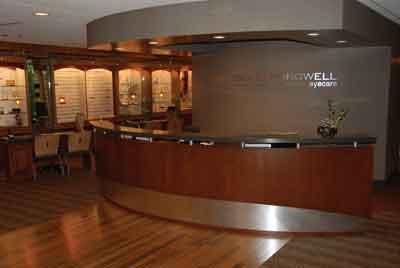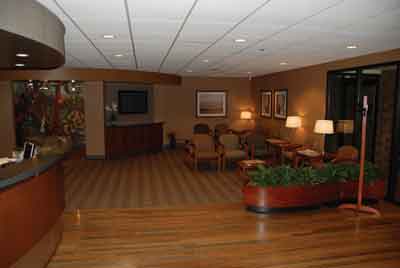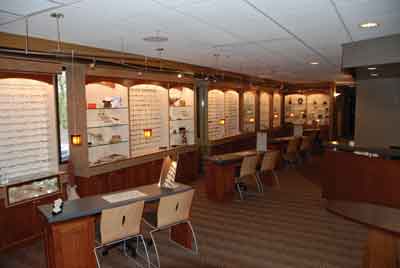In this series, Review of Optometry takes a close look at the dilemmas, decisions and life changes at each stage of an optometrists careerfrom optometry school to active practice to retirement. In each installment, we talk with optometrists in that career stage, as well as consultants who have relevant expertise and insight.
When Joan Hansen, O.D., opened her private practice in Tsawwassen, in Western Canada, in 1983, she knew she wanted to build it the right way. With a good referral base. With patients who stayed and whose children and grandchildren would also come to see her. With staff members who would become known in the community and make her patients feel comfortable. She deliberately chose a quiet location in a professional office and set about building her high-end referral practice one patient at a time.
After about 10 years of going it alone, Dr. Hansen was ready to bring in an associate.
Personally, I think the days of the solo optometrist are gone, she says. I dont think you can afford to have enough staff or to purchase the equipment you need to offer your patients the best care with just one doctor, she adds. Also, I think its good to have a couple of alternatives within the practice. Lets face it; not everyone is going to like me, but I want them to like my practice and want to come here.
Finding the right partner, though, proved to be a challenge. Dr. Hansen, who is past president of the Canadian Optometric Association, was looking for a younger partner, someone who could buy half the practice within a few years and eventually buy her out entirely when it was time for retirement. The first associate just wasnt the right fit. Three others, all women, moved or opted for another location to be closer to childrens schools or a spouses job.
The fifth time may be the charm, as Dr. Hansen and her current associate are in the midst of getting the practice professionally evaluated for a buy-in agreement. She has no regrets about how long its taken. It really does take time to see how you work together before committing to own a practice together, she says. I dont think its something anyone should rush into.
Longtime practice consultant Jerry Hayes, O.D., agrees. Bringing in an associate is an area where many O.D.s run into trouble, he says. People bring in a partner for the wrong reasons, or they find that they dont meet each others expectations.
Dr. Hayes says practitioners considering bringing on an associate have to treat the relationship almost like a marriageand they have to pay attention to the bottom line. Financially speaking, the threshold for needing a full-time associate is a solo gross of about $700,000 to $800,000 per year, which is higher than most people think, he says. A solo practitioner who is bringing in $600,000 gross may feel really swamped and want to bring in an associate, but that individual is likely to take a cut in net pay by doing so.
He more often recommends that an optometrist who is too busy hire more staff and assistants and/or hire a part-time associate to take some of the overflow one or two days a week.
Dave Ziegler, O.D., brought partner Chapman Leffingwell, O.D., into his Milwaukee, Wisc. practice 11 years ago, and it has proven to be a good match. Dr. Ziegler said its as much a leap of faith as it is about the numbers. As the senior partner, you have to be willing to sacrifice a little bit of income initially so that the new partner can get established. You have to be willing to let go of some control, he says.
 |
| Dr. Ziegler launched his practice in 1983 on a shoestring budget. This is what his practice looks like today, thanks to his business-oriented approach. |
It was always my dream to have a large, busy group practice, Dr. Ziegler says. Additional partners may be in the practices future plans, but for now, he and Dr. Leffingwell are managing to continue the growth they want simply by becoming more efficient and making better use of staff and new technology.
Movin" On Up
Another common challenge for the mid-career optometrist is renovating or relocating a practice that has grown out of its original location. Judging when its time to expand is a tough decision that has to be based partly on cash flow numbers and partly on gut instinct. Relocating to a nice facility and a prime location can be a huge practice builder, says Dr. Hayes.
Jay Petersma, O.D., found that to be the case when he gambled on an entirely new building a few years ago. The solo practice he opened in 1991 in a tiny 800-square foot space in Johnston, Iowa, had expanded once, and space was again feeling tight. Johnston was growing, and Dr. Petersma had the opportunity to buy a one-acre plot of ground near a new interchange in a booming area of town, where a McDonalds and a grocery store had just moved in. He built a multi-tenant building, relocating his practice there in 2001 and becoming the landlord to two family practice physicians, a law firm and an insurance agency.
In addition to the practice benefits of a new office, I saw the real estate venture as an opportunity to establish another source of revenue to fund my retirement, Dr. Petersma says. These days, it is foolish to depend on the sale of your practice to provide for you financially in retirement. With this building, I still have the option to sell my practice, but I can also convert the space to another use and lease it to a different type of business if necessary, he says.
Dr. Petersma serves on the local planning and zoning commission, one of the reasons he was plugged in to the growth patterns in Johnston. Serving as a commissioner has allowed me to help shape the development of the community I practice inand do so in a less controversial fashion than running for an elected office in the community, he says.
Hes gotten involved in the community in many other ways, too. He is a member of an active, growing church and the Chamber of Commerce, coach of the high school drum corps, an avid musician and active dad to his daughter.
I stay motivated by not overdosing on work, Dr. Petersma says. In my early days in practice, I got to know a number of older doctors whose every minute was devoted to their practice. Frankly, it was like the practice owned them. I knew I didnt want that for myself, he says.
Instead, he deliberately chose to practice in a small town, and he set a personal income goal for himself. When I reached that goal, I was basically done growing the practice, he says. Since then, hes tried to maintain approximately the same income, with a little extra every year for inflation, and has actually decreased the number of hours that he works to less than 30 per week.
Keeping the practice small doesnt mean keeping it stagnant, though. Dr. Petersma considers himself an early adopter, someone who is interested in new technology, new treatments and medications. He has often worked with industry on new product development and clinical studies.
Its easy to fall into the trap of grow, grow, grow, Dr. Petersma says. Ive always been more concerned about the quality of the growth than some optimal gross revenue number. My goal is to have a practice full of people I like who like coming to me, so I have focused on retaining the patients I want to have.
Smart Growth
Growth just for growths sake is dumb, concurs Dr. Hayes. A successful solo practitioner can bring in a high net income without expanding to multiple associates. On the other hand, a large multi-doctor, high-gross practice can be less financially successful than it appears from the outside.
According to Dr. Hayes, many practitioners in the middle stages of their careers find that they arent satisfied with their take-home pay, despite good gross performance. The national average for net revenue is 31% of gross earnings, but Dr. Hayes says doctors ought to aim for closer to 35 to 40%. Less than 25% is dangerously low, he says. (See Benchmarking by the Numbers, below).
|
Benchmarking by the Numbers |
|
National norms for expenses in a traditional dispensing optometric practice, expressed as a percent of collected gross income. |
|
Category |
Percentage |
Includes: |
|
Cost of goods |
27 to 33% |
Lenses, frames, contact lens inventory, lab equipment, portion of salaries for lab work |
|
Staff salaries |
15 to 20% |
Salaries, bonuses, payroll taxes, uniforms, insurance and continuing education |
| Occupancy costs |
5 to 8% |
Rent, insurance, property taxes, utilities, maintenance, and janitorial |
| Examination equipment |
3 to 5% |
Equipment expensed on a 5-7 year lease |
| Marketing and promotion |
1 to 2% |
Advertising, brochures, etc. |
| General overhead |
6 to 9% |
Expenses that dont fit elsewhere, office computer, phone system, postage, legal, accounting, dues, subscriptions |
|
Doctors compensation |
30 to 40% |
Salary, draw, bonuses, insurance, and other personal benefits. |
| Source: Hayes Consulting |
The point of benchmarks is not to say that the right number for your cost of goods is exactly 33%, he says. Rather, its to give you a basis for comparing your practice to those of your peers and to provide a basic model for reaching maximum profitability.
Dr. Hayes believes strongly that successful practices take good care of their business fundamentals as well as their patients. You can be a superb clinician, but if you arent so good on the management side, you may really struggle in private practice, he says. Staying fully engaged on the business side of the practice means regularly reviewing key financial indicators of the practice, creating an annual budget, and setting goals for the practice.
There is a wealth of tactical advice available in trade journals and from peers or consultants, but the first step is to really be a strategic thinker about your practice, he says. The big-picture question is how does a mid-career professional continue to grow to avoid becoming stale? The answer is that you need to keep bringing new ideas into the practice. Visiting successful colleagues, joining a study group, or hiring a consultant are among the ways he suggests to generate fresh ideas.
Making Time for Vision
Dr. Ziegler often presents with Dr. Hayes on business management panels and has taken his advice to heart, with a very business-oriented approach to private practice.
He launched his practice in 1983 on a shoestring budget, in a tiny office near Wilwaukee, Wisc. Today, he and Dr. Leffingwell, along with 17 full- and part-time employees, run a busy, growing practice in a newly remodeled 5000-square foot building.
 |
| Dr. Ziegler and his partner, Dr. Leffingwell, run a busy, growing practice in a newly remodeled 5000-square foot building. They employ 17 full- and part-time employees. |
When you first start a practice, youre running so fast, its hard to focus on where youre going, Dr. Ziegler says. At some point, you really need to step back and decide what your vision is for the practice. Dr. Ziegler and his partner hammered out a vision statement. They put it in writing, shared it with staff and regularly refer back to it. We strive to create a culture of excellence based on our vision statement, he says. It actually helps us make difficult decisions, because we just ask ourselves which path is consistent with the vision weve laid out for the practice.
They also sit down each year and set goals and specific objectives for the coming year. One goal for the current year, for example, is to increase charges per patient. One way they planned to achieve this was by increasing second pair spectacle sales through internal marketing using their new patient lifestyle database. Weve found that targeted direct mail works very well, Dr. Ziegler says. With this database, we can ask for a list of patients who enjoy water sports or who use a computer frequently and send those patients targeted information about polarized lenses or computer glasses.
 |
| One of Dr. Zieglers goals for the current year is to increase charges per patient by increasing second-pair spectacle sales through internal marketing using his new patient lifestyle database. |
They also include a coupon for a second-pair discount in a customized folder of information given to patients picking up new glasses. Inside the folder is information about the patients frames and lenses, care instructions and more. The idea for this dispensing program sprung from a discussion with his study group about the great service one of the members received at his last oil change. Together, the study group figured out how to translate the quick-lube shops marketing strategy into an optometric setting.
In fact, Dr. Ziegler credits his success in several areas to the support and encouragement of this study group, which he organized 15 years ago. Much as Dr. Hayes suggested, it is a constant source of new ideas. He and 10 other optometrists from accross the country meet once a year for two days in one of the members cities. Utter confidentiality is the rule, and since none of the doctors compete with each other, they can all share problems, successes and financial information openly. We learn so much from each others successes and failures, Dr. Ziegler says.
Another topic that comes up frequently in the group is staff management. I hear from doctors all the timewhether they are from large or small practicesthat their biggest problems are with hiring, training, retaining and motivating personnel.
Fortunately, its a topic covered by hundreds of management books and seminars, and Dr. Ziegler says hes made an intense effort to study and implement progressive human resource practices over the years. If you invest in your employees and learn how to encourage and em-power them, it makes a huge difference in your quality of life and how well your practice runs, he says.
Dr. Ziegler says hes not getting tired of optometry at all and hopes to still be running his practice successfully for many years to come. I still love talking to patients and solving their problems. I like going fast. I feel like Im just hitting my stride, he says.
Next in the series: In November, well look at how optometrists can start to plan for retirement as they near the end of their active practice careers.
Vol. No: 143:10Issue:
10/15/2006




